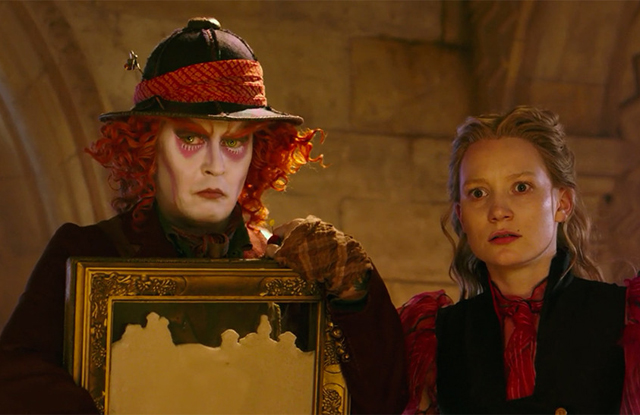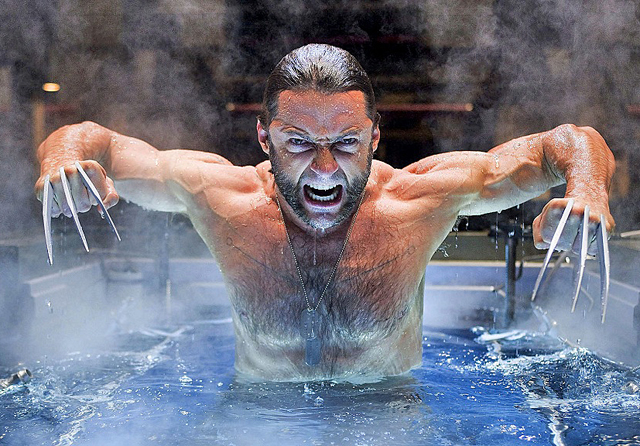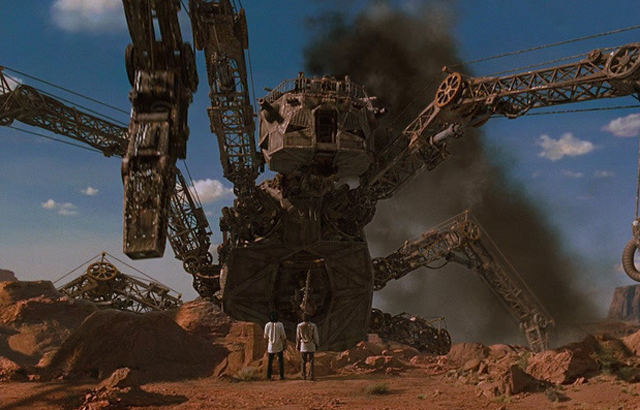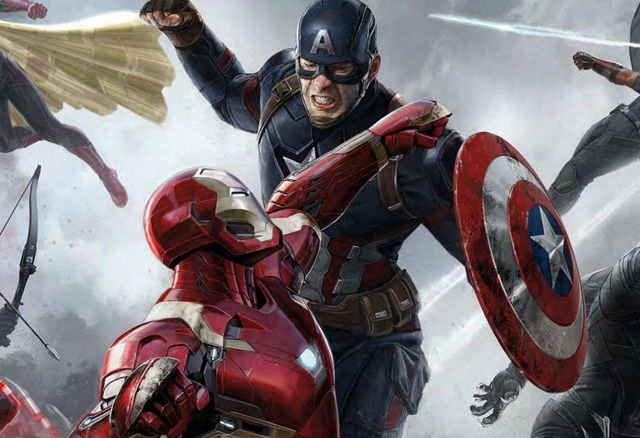
Fantasy films seem to go through cycles in Hollywood. Sometimes they are out, and then sometimes they become hot properties again. After something of a resurgence in the 1980’s, the fantasy genre went into hibernation during the 90’s, until Peter Jackson’s Lord of the Rings trilogy brought it back in a big way. Afterwards, it seemed like any Young Adult novel or any original fantasy concept became a profitable investment to make, until it didn’t. Towards the end of the 2000’s, the fantasy genre seemed to fall by the wayside with Comic Book movies taking it’s place. And now, it seems like the genre is only being kept afloat by the one studio that has seemingly cornered the market now; Disney. What benefits Disney is the fact that they’ve built their brand around the fantasy genre, and they have a proven track record of getting it right. Think of any iconic fairy tale, and more than likely Disney has made the definitive version of that story for the big screen. But, when we think of the definitive versions of these stories, like Snow White, Sleeping Beauty, or the Little Mermaid, it’s usually the animated version that we think about. So now, it is interesting to see Disney taking their own animated classics and translating them into live action today and in turn becoming the only studio delivering grand scale fantasy films to the market right now. It’s easy to see why they are doing it; they have an extensive catalog to draw from and each comes with it’s own built in audience. But, one has to wonder if rehashing their old classics in a new guise is actually beneficial to the Disney brand or not, and whether or not this adds any substance to the fantasy genre as a whole.
So far, Disney’s live action adaptations of their animated films have been mixed. One of them did hit it’s mark last year in Kenneth Branagh’s retelling of Cinderella, a movie that did a great job of drawing on the nostalgia of the original film while still maintaining an identity of it’s own that worked. This year’s The Jungle Book did an okay job with it’s adaptation, delivering on the visuals but underwhelming in it’s plot. And then you get the bad adaptations that missed the mark completely. 2014’s Maleficent disappointed because it took the edge out of one of Disney’s greatest villains as well as missed the point of the original fairy tale. And then there was Tim Burton’s Alice in Wonderland (2010), the movie that began this recent trend of adapting animated classics. The concept sounded perfect on paper; legendary Gothic filmmaker Burton taking on Lewis Carroll’s classic absurdist fantasy with Johnny Depp bringing his special brand of hammy acting to the role of the Mad Hatter. How could it go wrong? Well, as both an adaptation and a movie, it went very wrong. Tim Burton’s Alice was no where near as whimsical as it should’ve been, and instead was dour and surprisingly violent. This Alice had none of the cartoonish zaniness of Beetlejuice (1988) or the visual splendor of The Nightmare Before Christmas (1993). It’s Tim Burton at his most disinterested, merely delivering on what the studio wanted instead of coming up with something unique. Still, the movie was a box office hit, grossing over a billion worldwide despite it’s shortcomings. A sequel was naturally in the works thereafter, but perhaps rightly, Tim Burton decided to move on. Now a follow-up is here six years after the release of the original, titled Alice Through the Looking Glass (taken from Lewis Carroll’s own sequel to his original novel), and it’s premiering in a decidedly different atmosphere than it’s predecessor. Did Disney learn some of the lessons of the original or did they just double down and coast on formula instead of doing something different?
The movie takes place only a few years after the adventures in the last film. For those who haven’t seen the original, it should be noted that the 2010 film was not a remake of the original story, but instead something of a pseudo-sequel, finding Alice returning to Wonderland in adulthood. This sequel finds Alice Kingsleigh (Mia Wasikowska) in the position of sea merchant, running the same ship that her father once did. She unfortunately returns home to find that her investment partner has suddenly died and that the deed to her ship is in the possession of his spoiled, entitled heir, who’s looking to fire her. Alice now finds that her livelihood is in danger, but her dilemma is interrupted when she is visited by her old friend The Catepiller (Alan Rickman in his last film role), now a butterfly who can cross between worlds. He shows Alice a way back to Underland (their home’s name, which Alice mistakes for Wonderland) through a mirror (or looking glass), where she is greeted by the White Queen (Anne Hathaway) as well as the White Rabbit (Michael Sheen) and the Cheshire Cat (Stephen Fry). They tell Alice that the Mad Hatter (Johnny Depp) has lost his mind and that the only way to bring him back to himself is to find his family, who are believed to be dead. Alice is tasked with altering the past to prevent the Mad Hatter from losing his loved ones, and to do so, she must steal a device called the Chronosphere from Time himself (Sasha Baron Cohen). Through her time travels, she tries to save her friend, while at the same time learning about all the backstories of the residents of Underland, all the while being hunted down by Time, looking to get back what’s his. She soon learns, all the problems facing her friends lead her once again to facing an old enemy; the Red Queen (Helena Bonham Carter).
So, as you can see, very little of this actually bears any resemblance to the Alice in Wonderland story that we all know. This is a movie that merely uses the setting and the characters for it’s own purpose. Now, does this work out as a good thing or a bad thing for the movie? Well, here’s the situation. On the whole, this is a better movie than the 2010 original; but not by much. Using an original plot as opposed to mishandling a familiar one does indeed benefit the film; it’s less pressure to stay faithful to the original source. That being said, this movie still carries over the same problem of the original, in that this world never once fells right as a representation of Wonderland. Lewis Carroll’s original 1865 children’s novel was a masterpiece of absurdist literature. It appealed to readers because Carroll’s Wonderland was a place where all rules of law, manners, and even physics were turned upside down and everyone there was just a little bit “mad”, making Alice’s journey both whimsical while at the same time always perilous. It’s beloved by anyone who lives outside social norms, embraces the unusual, and let’s their imagination go wild. The animated form is a perfectly suited medium for Carroll’s vision, because it’s the best way to capture the mad-cap sense of it all, and that’s why Disney’s 1951 feature is as beloved as it is. So, it makes it all the more baffling why Tim Burton’s film as well as this sequel tries so hard to bring order and sense to Wonderland. This is a Wonderland that’s fanciful, but in a way that’s forced. It’s as if the studio was playing it too safe with the material, and in turn, it kind of neuters the vision of Wonderland as a whole. This sequel sadly falls into the same trap as it’s predecessor by making Wonderland feel like every other fantasy realm we’ve ever seen, and less like it’s own unique world. If there was ever a time to show off that anything is possible in the realm of fantasy, this would be the film to do it in, and it’s sadly a road not taken by this series.
I believe that a great deal of the problem with this movie and the original is in the screenplay. Screenwriter Linda Woolverton has had a long history of writing for the Disney company (contributing to the scripts of Beauty and the Beast and The Lion King for instance), but recently she’s been tasked with adapting these animated classics into the live action medium and I feel that it’s a task that’s not well suited for her. A big problem with her writing style is that it relies too heavily on explaining things. She seems to devote too much time to trying to make sense of a story that doesn’t need to be complicated in the first place. There’s a lot of “on the nose” dialogue in this film, like Alice’s constant usage of half-baked philosophical musings that have no meaning, such as ” Sometimes I believe in as many as six impossible things before breakfast.” The way Woolverton plots her movies also tends to lean too closely to fan fiction rather than actual real screenwriting. Like most low grade fan fics, Alice seems too self-interested in letting uncharacteristic scenarios play out than actually building any weight behind them. This has led to some bad story-telling ideas at Disney recently like turning Maleficent into a hero instead of a villain (another script written by Mrs. Woolverton), and here, it makes the mistake of turning Alice into a proactive, warrior-like crusader, instead of the wandering traveler that she is in the book. It’s a weird thing that’s happened to the fantasy genre in the wake of Lord of the Rings, where it seems like each film needs to end with their hero taking sword in hand and fighting in an epic battle, as Alice did against the Jabberwocky in the previous film. Thankfully, that doesn’t happen in this movie, but Alice’s Back to the Future style time travel adventure doesn’t quite fit well either.
The big difference between this and the 2010 Alice is mostly in the style of film-making. Instead of Tim Burton directing, this time the reins are given over to James Bobin, who a couple years back delivered a charming new big screen adventure for the The Muppets in their new movie of the same name. He also started off his career as the co-creator of the cult series Flight of the Concords, which shows that he has a knack for absurdist comedy. So, allowing him to direct this Alice in Wonderland sequel makes sense. Unfortunately, Bobin can’t quite overcome the faults of the screenplay. His management of the story still feels disjointed and at times rushed, not allowing any cohesive character development or tone to take hold. That being said, he does help improve some of the visual aesthetic for the film. The Tim Burton Alice not only suffered story-wise, but it was also ugly to look at, with muted colors and garish CGI overkill; only the Oscar-winning costumes by Coleen Atwood stood out. Thankfully, Bobin does make this sequel look brighter. The colors pop a lot more and there are some genuinely interesting visual ideas throughout, like Time’s gothic style fortress or the Red Queen’s garish vegetable built hide-out. Sadly, most of these visuals are drowned out by the movie’s over-reliance on CGI imagery. Not only that, but the pacing is so manic, that the movie never devotes enough time to allow these visuals to soak in. The movie only excels when it’s allowed to embrace the weirdness of this world and that sadly is few and far between. But, credit is due to James Bobin for at least trying to make this world interesting, as opposed to Tim Burton’s disinterested approach in the last one.
The cast is also a mixed bag. Mia Wasikowska was decent enough as Alice in the original, and she remains mostly the same this time around too. Alice has so far been a fairly bland hero in these movies, but that’s more the fault of how she’s written than how she’s played. Mia at least tries to make the character sympathetic, even when the script calls for her to do some really stupid things. The same cannot be said for Johnny Depp as the Mad Hatter. This is without a doubt the worst performance that the notoriously eccentric actor has ever created. Sometimes his acting intuitions generate some interesting roles out of him, and his oddball role as Jack Sparrow in the Pirates of the Caribbean movies is rightly iconic for that reason. But here, I don’t know what he was thinking. His whispery voiced, kubuki make-up wearing Hatter is a complete misfire of a character. He’s not charming nor endearing. Anytime he’s onscreen, the movie suffers as a result. I get the feeling that he was just saddled with this role only because it was the only way Tim Burton could get Disney on board and Depp was only helping a friend out, but could never fully grasp the character and this was him just coasting on instinct. Sadly for him, he’s the character that the rest of the film hinges on, and the lack of appeal for the Hatter reflects badly on the film as a whole. Fairing better are Sasha Baron Cohen and Helena Bonham Carter in their roles as Time and the Red Queen. These two seem to know what kind of movie they’re in and they are clearly having fun with their roles. Cohen actually make Time a surprisingly effective new addition to this world; both funny and poignant when he needs to be, utilizing his talents as an actor perfectly. Carter, the best performer from the original as well, continues to be strong here and gives the single funniest performance, surprising given who her costars are. It really shows how much the right cast can elevate material they’re given, and I applaud Disney for not only holding on to what they already had, but also expanding it and giving them more to do.
So, is it worth revisiting this Wonderland yet again. Well, if you were a fan of the original (which I doubt very few are) I don’t think you’ll be disappointed. The movie is a mild improvement over the original, but let’s not forget, the bar was low to begin with. This sequel is still plagued by terrible writing, a way too artificial visual aesthetic, and an uneven cast of characters. Not to mention, there’s no cohesion to the plot (the story-lines within Wonderland and outside of it have nothing to do with each other) and the time travel element is pointless and never taken to it’s full advantage. That being said, this film does feel less lazy than it’s predecessor and it thankfully avoids some of the same genre pitfallls. This movie thankfully doesn’t end in an epic battle like so many other fantasy epics, and instead goes for a somewhat near apocalyptic conclusion. There’s also the performances of Sasha Baron Cohen and Helena Bonham Carter that help to liven up the movie and keep this from being too humorless and dour. Still, the fact that Disney devoted so much time and effort to create a Wonderland that feels anything but wonderful is not a good sign. If you’re going to bring Lewis Carroll’s absurdist vision to life, don’t hold it back. Disney is the studio best equipped to adapt this source material and they did an admirable job of just that in their animated classic. Sadly, the translation has not panned out in the live action medium and it makes one wonder if Disney’s raiding of it’s animated canon for this treatment is really a good idea overall. If you want to watch Alice in Wonderland, go with the original animated classic. Alice Through the Looking Glass is not the worst thing ever, but it’s a far cry from wonderful too.
Rating: 5.5/10


